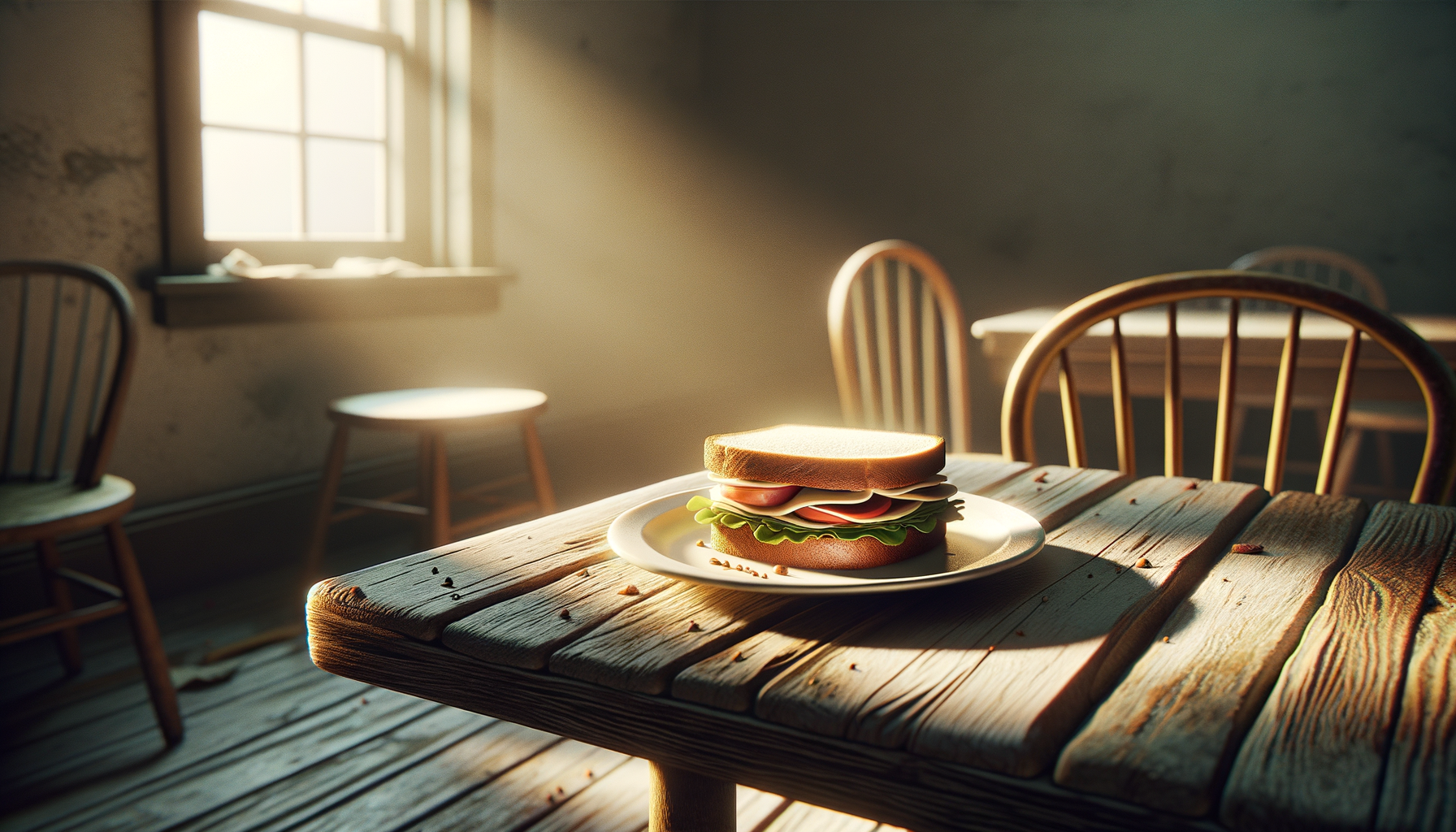The Tiny Plate That Changed My Life
Growing up in a Greek household, the dinner table was sacred. It was where debates ignited, laughter echoed, and more food appeared just when you thought the meal was over. My family’s love language was food, but not in the Pinterest-board “here’s a cute charcuterie spread” way. No, my parents were fluent in extra-large portions that said, “Eat, Dimitri, or you’ll wither!”
So, when I moved to London for grad school, I brought my habit of overloading plates with me. Somehow, it became less about familial connection and more about stress management. Long day of lectures? Huge serving of moussaka. Thesis deadlines piling up? Why not conquer an entire loaf of bread? And so it went. Life in hospitality later only fueled the indulgence—a bite of baklava here, an extra souvlaki there. They weren’t “bad” habits, not at first. But over time, I noticed I was duller, slower, and, frankly, unhappier in my own skin. Something had to give.
Enter: the dessert plate.
Subtle, but Sneaky: The Psychology of Small Shifts
I’d love to tell you my brilliant solution came from some profound philosophical revelation—Socrates whispering in my mind about moderation. Truthfully, it was less lofty. I was washing dishes one night when I looked down at my dinner plate, a smooth ceramic circle straight from the Pythagorean school of “how much can you pile on before it becomes structurally unsound.” To its left sat a dessert plate—a smaller, unassuming sibling. In that moment, I had a eureka-style epiphany: What if, instead of trying to overhaul my habits wholesale, I just changed the size of the stage they played out on?
Now, this might sound absurdly simple, but here’s the brilliance of the dessert plate: It tricks your brain with a classic psychological principle called unit bias. This is the idea that we tend to feel like a single serving—whatever its size—is the “right” amount. Using a smaller plate meant my meals automatically got portioned out without that pesky “second-guess-your-life-choices” pressure.
So, instead of piling a mountain of pastitsio (Greek lasagna) onto an oversized dish, I could serve myself a little taste of everything I loved—yes, even the creamy stuff—and stop when I was full. The key wasn’t restriction, it was mindfulness. The plate became my unlikely accountability buddy.
More Than Plates: Small Changes, Big Ripples
Switching to a smaller plate was like solving a Rubik’s Cube’s first layer—it didn’t solve everything, but it set a foundation. The change wasn’t just physical; it radiated into other areas of my life, including my relationships. How? By teaching me to pause before plunging in. Here's what gradually transformed:
1. Mindful Eating Became a Gateway to Mindful Living
Instead of shoveling hummus like a horse with a feedbag (we’ve all been there), I started savoring each bite. This trickled into other arenas. Conversations with friends became richer when I wasn’t simultaneously checking my phone. Date nights with romantic partners felt less performative, more present. I learned that life’s pleasures—whether flaky olive pie or meaningful connection—are best enjoyed slowly.
2. I Learned to Prioritize
Little plates force choices. With limited real estate, you have to be deliberate. Do you want the roasted lamb or the tzatziki-drenched zucchini fritters? Or both, but only in smaller portions? This habit of choice-making bled into how I handled my day-to-day. I became more intentional in saying no to superficial commitments so I could say yes to meaningful time with loved ones (and, let’s be honest, more late-night bouzouki jam sessions).
3. Space for Gratitude
In Greece, we joke that if you can’t finish your meal, someone’s uncle will swoop in and finish it for you—waste nothing! But the smaller plate had an unexpected benefit: less guilt and more gratitude. Food became something sacred again. Not a crutch but a celebration. Sitting down with smaller servings reminded me to appreciate what I had without feeling overwhelmed or wasteful.
Where the Plate Meets the Heart
The brilliance of this micro-shift hit home during a romantic weekend on Santorini with a girlfriend I was seeing at the time. Amidst all the postcard-perfect moments—the sunsets, the wine-fueled moussaka dinners—I noticed something different. Gone was the compulsive Dimitri, always asking for “just one more slice” of bread, metaphorically and literally. Sitting across from her, laughing in the candlelight, I wasn’t just physically lighter; I felt emotionally lighter too. I wasn’t weighed down by habits or distractions. I was there, fully present, enjoying life in bite-sized portions.
This wasn’t just about food anymore. It was about taking small but intentional steps to shift my life toward mindfulness. Whether it’s Greek yogurt or relationships, the principle rings true: Don’t drown in abundance; savor what you truly need.
How You Can Start Small
Okay, maybe this isn’t your lightning bolt moment. After all, not everyone’s life is ruled by moussaka and metaphors. But here’s the thing: transforming your habits—whether you want to be more present in relationships, throw off old emotional baggage, or simplify daily chaos—doesn’t require a Herculean effort. It just takes one small plate. Or habit. Or fill-in-the-metaphorical-blank.
Start by asking yourself these questions:
- What takes up unnecessary space in my life? Is it the overflowing schedule, the negativity, the “eat in front of Netflix” routine?
- How can I downsize to upgrade? Maybe it’s swapping weekend chaos for Sunday morning journaling. Maybe it’s leaving your phone outside the bedroom to create “device-free” intimacy with a partner.
- What feels manageable—not overwhelming—to change? The best habits are realistic. Don’t commit to running a marathon if all you really need is a daily walk.
And hey, why not start literally? Grab a smaller plate. Choose a smaller bite. One habit saved me, and it might just do the same for you. You might find, as I did, that life is far more satisfying when you leave room for what really matters.
Takeaway: Bite Into Life, Sparingly but Joyfully
The dessert plate didn’t change the universe, but it changed my world. It taught me moderation without micromanagement, gratitude without guilt, and joy without excess. From there, it shifted my relationships—with food, with myself, and with others. The lesson? You don’t need grand gestures, massive overhauls, or Herculean efforts to transform your life. Start small. Start deliberate. Start where it feels light. Because sometimes, all it takes to change everything is a different plate.
So, what’s your “dessert plate”? It’s worth finding out.




















